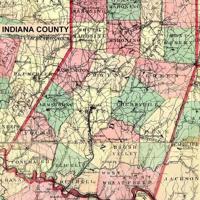Authorities in Indiana County are joining others in southwestern Pennsylvania in expressing concern about a disease called respiratory syncytial virus, or RSV.
“There has been some concern about the possibility of three pandemics coming this winter,” Indiana County Emergency Management Agency Director Thomas A. Stutzman told the Board of County Commissioners this week. “It will be a combination of new strains of COVID-19, as well as seasonal flu and a respiratory syncytial virus called RSV.”
According to the federal Centers for Disease Control and Prevention, RSV is a common respiratory virus that usually causes mild, cold-like symptoms.
“Most people recover in a week or two, but RSV can be serious, especially for infants and the elderly,” the CDC advised on the RSV page on its website. “RSV is the most common cause of bronchiolitis (inflammation of the small airways in the lungs) and pneumonia (lung infection) in children under one year of age in the United States.”
The CDC said its surveillance showed an increase in RSV detections and RSV-related emergency room visits and hospitalizations in various regions of the US, with some regions approaching peak seasonal levels.
That includes the Pittsburgh region, Stutzman said.
“At the regional level, Children’s Hospital has told counties in the region that they’ve seen a spike in RSV cases among children coming to their (emergency room),” Stutzman said. “There is no vaccine for RSV, but it can be serious for babies and the elderly. So we just want to encourage everyone to continue with the best practices that we all did during the COVID-19 pandemic and that will reduce the burden on our healthcare system.”
The University of Pittsburgh Health Center, or UPMC, whose hospital network includes Children’s, issued a January 2020 advisory on RSV that says that RSV is a common virus and that most children get it by age 2 and recover from it. illness in a week or two.
“Previous infection does not prevent you from getting infected again, although subsequent episodes tend to be milder,” the UPMC Health Beat article states. “But for very young children and infants, or for children and adults with weakened immune systems, RSV can be very dangerous.”
Meanwhile, the surveillance of COVID-19 continues. As Stutzman told commissioners this week, the CDC is reporting a “low” level of the virus in Indiana County, but a “high” rate of transmission.
And so in all neighboring districts.
Pennsylvania is in its third week of flu monitoring for the 2022-2023 season, reporting 2,480 laboratory-confirmed flu cases in 60 of 67 counties through Oct. 22, including 1,944 cases of type A, which can come from, for example, wild birds. , and 530 cases of type B, which almost always comes from another person.
The Pennsylvania Department of Health said seasonal flu activity here and across the United States is low, but higher than at the same time of year in the past five flu seasons.
Indiana still has more type B cases, nine, but eight have been identified as type A.
Cambria has 16 B-types and eight A-types, as well as one case that does not belong to either type.
Armstrong, Clearfield and Jefferson have reported six cases each, with fewer than five type A or B cases in any of those counties.
Westmoreland has 61 type A cases and 17 type B cases.
There was one confirmed flu death in the Keystone State during the second week of the seasonal count period.
https://www.indianagazette.com/news/local/rsv-covid-and-flu-pose-tri-pandemic-threat-stutzman-said/article_cd1d60ef-5d05-546a-9697-6884c28b7ce3.html





